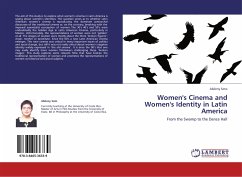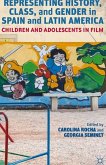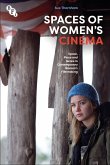The aim of this study is to explore what women s cinema in Latin America is saying about women s identities. The question arises as to whether Latin American women s cinema is reproducing the dominant patriarchal discourses of the traditional cinema or, on the contrary, breaking with the imposed essentialist conception of women. The 30 s 40 s and 50 s were undoubtedly the Golden Age in Latin American Cinema, particularly in Mexico. Unfortunately, the representations of women were not golden at all. The images of women were mostly about the three broken figures : virgin, mother or prostitute. Since the 60 s a new Latin American cinema emerges. This new cinema was critical in many important issues of politics and social change, but still it was not really critical about women s negative identity widely expressed in the old cinema . It is since the 90 s that one may easily identify more women filmmakers challenging these broken images . This study explores some relevant films that have broken the traditional representation of woman and promotes the representations of women as historical and plural subjects.
Bitte wählen Sie Ihr Anliegen aus.
Rechnungen
Retourenschein anfordern
Bestellstatus
Storno








